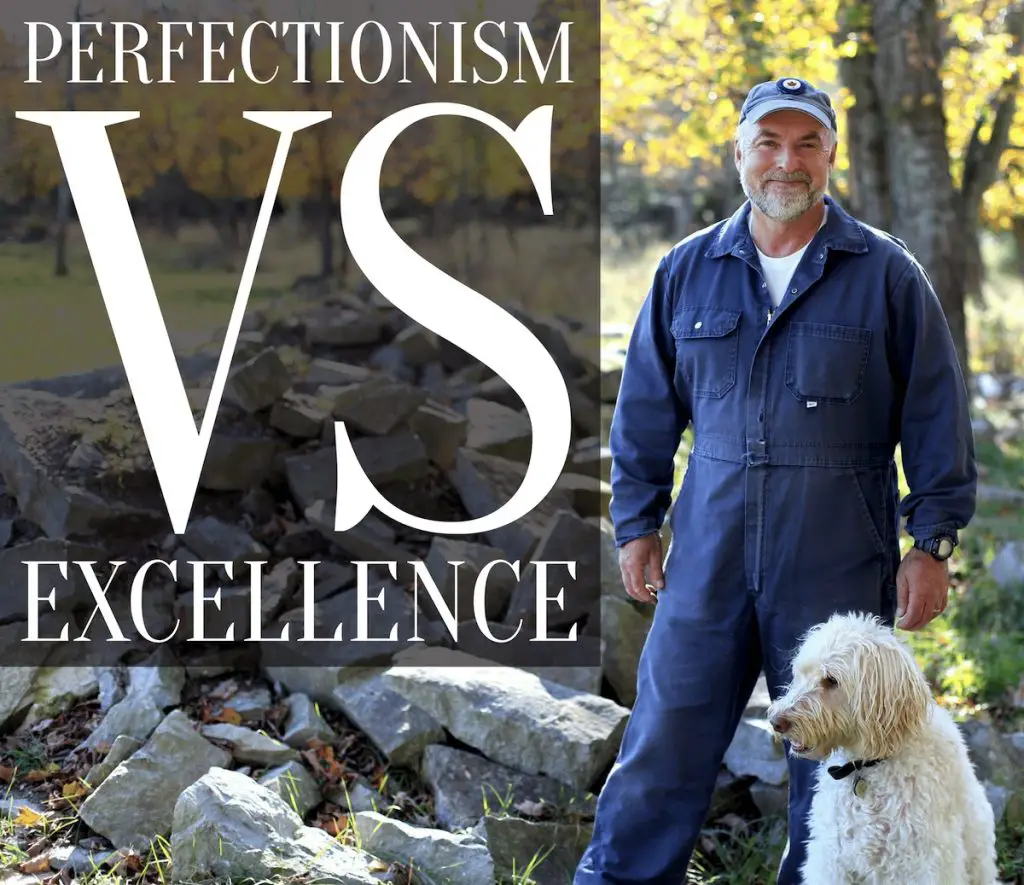Sooner or later, in more ways than one, staying sane in this life involves mastering mental strategies. If you’re a hands-on person who values quality, there’s also a chance you battle with perfectionism. I used to, but more than 25 years ago I discovered a trick for turning the negative effects of perfectionism into something positive and productive. Perhaps what I’ve found will help you, too.

Wikipedia defines perfectionism as a personality trait characterized by striving for flawlessness and setting high performance standards, accompanied by critical self-evaluation and concerns regarding others’ evaluations. On the surface, this doesn’t sound too bad, does it? After all, if you want to build great furniture or renovate your home well or revive an old pickup truck or any other hands-on task, you need to set high standards, right? The problem with all this is the unspoken mindset that nothing is ever good enough for the perfectionist. That’s the part that drives perfectionists (and the people around them) crazy. If you’re nodding your head right now, you’re probably a perfectionist or you live with one.
The way to harness the power of perfectionism without it making you batty comes down to a small but crucial mental flip-flop. Master this flip flop and it’ll convert damaging perfectionism into something I call the “pursuit of excellence”. Just don’t be fooled. The pursuit of excellence looks and sounds like perfectionism on the surface, but it has one vital feature that makes all the difference.
The problem with perfectionism is that nothing can ever be absolutely perfect in this world. That’s why perfectionism is a game no one can win. In Disney’s classic 1967 movie The Jungle Book, Baloo the bear offers some powerful anti-perfectionist philosophy in the song The Bare Necessities. I usually find this line popping into my head when I need it.
“And don’t spend your time lookin’ around, for something you want that can’t be found.”
Absolute perfection simply does not exist in this dirty old world of ours, and the root of the distress of the perfectionist is believing the lie that perfection is possible. It’s not. Rejecting this lie is the first step towards relief, but there’s something even more important.
The thing that delivered me from perfectionism is the understanding that I need to have two states of mind whenever I’m working on any task. One state of mind simply doesn’t work properly on its own. The first state involves striving for the best results I can possibly get while I’m working. This is identical to perfectionism and it’s necessary for high quality results and improving skills. Nothing good ever happens without effort, lots of effort, and nothing great ever happens without high standards. The thing is, at some point, you need to adopt a certain measure of surrender. You need to do that mental flip flop I mentioned. If you remember that absolute perfection is impossible, it’ll help you kick into “satisfied mode”. This is the fundamental feature of the pursuit of excellence.
Try as hard as you can within the time frame, budget, conditions and skills you’ve got, then flip-flop into a perspective of surrender as you approach completion. You need to be happy with the results, whatever they are. Without this mental flip-flop, all perfectionists do one of two things. Either they go crazy, or they abandon the pursuit of excellence altogether because it’s too painful to do anything else. They simply stop trying. Both outcomes are negative and unnecessary. If you’re a hard-core perfectionist, you’ll find the “flip-flop of sanity” difficult at first. Keep applying this mental discipline to your life and it’ll become your new and healthy habit. Trust me, if you’re a perfectionist, it’s definitely worth the trouble to become a “pursuer of excellence” instead.